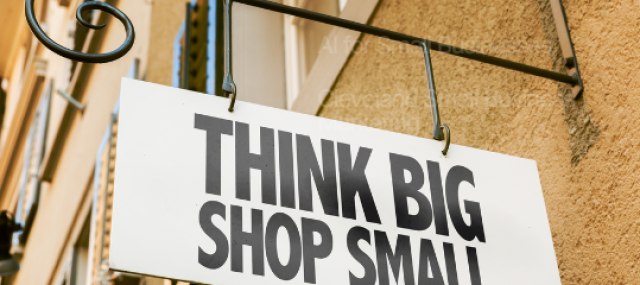

Killing traditional marketing, one algorithm at a time.
Stephanie Unterweger doesn't follow marketing rules and trends—she breaks them. As Founder & CEO of Brands at Play, she's rewriting the rules of brand strategy by weaponizing AI and deep psychographic insights to cut through the noise that's suffocating most brands today.
While others debate whether AI will replace human creativity, Stephanie's already three moves ahead, building frameworks that decode human psychology and turn raw data into authentic brand experiences. Her contrarian approach challenges everything marketers think they know about audience engagement, proving that the brands winning tomorrow are the ones bold enough to abandon yesterday's playbook and embrace the intersection of algorithmic precision and emotional intelligence.
After surviving three strokes at the height of her Fortune 500 executive marketing career—where she served as Global Director of Marketing Communications for GE's $12+ billion Healthcare Systems division and led brand strategy for Saint-Gobain's Life Sciences division—Stephanie made the ultimate contrarian move: she walked away from corporate success, completely reinvented her life and career, and joined a rock band.
This near-death awakening didn't just change her perspective—it supercharged her ability to help brands find their authentic voice in a world drowning in artificial noise. She has architected omnichannel growth strategies for leading CPG and retail brands, while simultaneously empowering startups and emerging companies to leverage cutting-edge technology and disruptive marketing frameworks that enable them to outmaneuver their enterprise competitors.
As a speaker, Stephanie delivers provocative insights on brand strategy in the AI era, the evolution of marketing, and building resilient, antifragile organizations. Her signature talks—including "The Algorithm Rebellion: What Happens When AI Starts Ignoring Our Marketing Rules" and "David vs. Goliath 2.0: How AI is Giving Small Brands Superpowers"—combine cutting-edge marketing intelligence with hard-won wisdom from personal transformation. Her unique perspective bridges the gap between technological disruption and human resilience, offering audiences both strategic frameworks and inspirational insights for thriving in an AI-driven business ecosystem.
Founder & CEO of Brands at Play, author of "Control+Alt+Delete: A Rebel's Guide to Brand Strategy in the Intelligence Era," speaker, and unapologetic disruptor, she delivers insights that make the C-suite rethink their entire strategy. Think of her as part marketing strategist, part tech visionary, part rock star — because shaking up an industry requires that kind of rebellious grit.
The future of marketing isn't coming. It's here. And Stephanie's helping define it.
Available For: Advising, Authoring, Consulting, Influencing, Speaking
Travels From: Cleveland, OH
Speaking Topics: #Marketing | #BrandStrategy | #AIMarketing | #OrganizationalDesign | #AntifragileOrganizations | #Leadership in an #AI Era
#AIMarketing #MarketingAutomation #ArtificialIntelligence #MarketingInnovation #DigitalTransformation #BrandStrategy #MarketingDisruption #DataDrivenMarketing #FutureOfMarketing #MarketingFuturist #InnovationSpeaker #ThoughtLeadership #AIForBusiness #CreativeStrategy #AuthenticBranding #DisruptiveInnovation #AntifragileLeadership #OrganizationalResilience #WomenInLeadership #EmotionalIntelligence
Available For: Advising, Authoring, Consulting, Influencing, Speaking
Travels From: Cleveland, OH
Speaking Topics: David vs. Goliath 2.0: How AI is Giving Small Brands Superpowers, The Algorithm Rebellion: What Happens When AI Outsmarts the Marketer, Stress-Testing
| Stephanie Unterweger | Points |
|---|---|
| Academic | 0 |
| Author | 137 |
| Influencer | 14 |
| Speaker | 0 |
| Entrepreneur | 0 |
| Total | 151 |
Points based upon Thinkers360 patent-pending algorithm.
Tags: AI, Digital Transformation, Marketing
Tags: AI, Digital Transformation, Marketing
Tags: AI, Digital Transformation, Marketing
 What Is HubSpot? The 2025 HubSpot Guide to Everything You Should Know
What Is HubSpot? The 2025 HubSpot Guide to Everything You Should Know
Tags: AI, Digital Transformation, Marketing
Tags: AI, Digital Transformation, Marketing
 Small Business Digital Marketing Strategies: The Playbook for Growth
Small Business Digital Marketing Strategies: The Playbook for Growth
Tags: AI, Business Strategy, Marketing
 Brand Strategy vs Marketing Strategy: What Executives Need to Know
Brand Strategy vs Marketing Strategy: What Executives Need to Know
Tags: AI, Business Strategy, Marketing
Tags: AI, Digital Transformation, Marketing
Tags: AI, Digital Transformation, Marketing
Tags: AI, Digital Transformation, Marketing
Tags: AI, Digital Transformation, Marketing
Tags: AI, Digital Transformation, Marketing
Tags: AI, Digital Transformation, Marketing
Tags: AI, Digital Transformation, Marketing
Tags: AI, Digital Transformation, Marketing
Tags: AI, Digital Transformation, Marketing
 CONTROL+ALT+DISRUPT: A Rebel’s Guide to Brand Strategy in the Intelligence Era
CONTROL+ALT+DISRUPT: A Rebel’s Guide to Brand Strategy in the Intelligence Era
Tags: AI, Marketing, Personal Branding
 The Art of Aging Brilliantly
The Art of Aging Brilliantly
Tags: Marketing, AI, AGI
 Will AI Replace Marketing? The Future of Marketing Jobs in the AI Age
Will AI Replace Marketing? The Future of Marketing Jobs in the AI Age
Tags: AI, Future of Work, Marketing
 How "Protecting the Brand" Became the Excuse That's Killing Brands
How "Protecting the Brand" Became the Excuse That's Killing Brands
In boardrooms across the globe, a familiar refrain kills bold marketing initiatives before they begin: "We need to protect the brand." While this sounds prudent, it has become fear masquerading as strategy. What began as legitimate concern about brand equity has morphed into a convenient excuse for inaction, stagnation, and ultimately, irrelevance.
The uncomfortable truth: 70% of digital transformations fail due to resistance to change, according to BCG research. Yet many initiatives never reach implementation—they're killed in planning meetings by leaders wielding "brand protection" as a shield against innovation.
Consider the data: 89% of large companies have digital transformation initiatives underway, but they've captured only 31% of expected revenue, reveals McKinsey. Meanwhile, companies with strong digital capabilities earn two to six times higher shareholder returns than those falling behind.
The fundamental flaw in brand protection arguments is presenting a false binary: protect the brand OR innovate. This thinking is intellectually lazy and strategically dangerous.
True brand protection requires evolution. A brand that doesn't adapt becomes irrelevant, making it more vulnerable—not less—to competitive threats and customer defection.
Harvard Business Review research on brand differentiation studied 275 companies over 11 years, finding that customer perceptions of brand distinctiveness directly correlated with stock performance. Brands that stood still, regardless of how "protected," lost value.
McKinsey research shows that brand innovators grow their top-line four percentage points faster than less-innovative companies. Research on reputation risk reveals 70-80% of market value comes from intangible assets like brand equity—making organizations especially vulnerable to being perceived as outdated or irrelevant.
In September 2018, Nike launched its controversial Colin Kaepernick campaign for the 30th anniversary of "Just Do It." The former NFL quarterback had protested racial injustice by kneeling during the national anthem.
The backlash was immediate. Videos of burning Nike shoes went viral. Conservative pundits called for boycotts. Nike's stock initially dipped.
According to case study analysis, the calculated risk paid off spectacularly:
$6 billion increase in brand value
$163 million in earned media
31% bump in sales
First Emmy award since 2002
The campaign succeeded because it was authentic to Nike's brand values of challenging the status quo and standing up for athletes who inspire change.
Nike's risk-taking extends beyond campaigns. Since 2011, Nike has grown direct-to-consumer sales from 16% to 35% of brand revenues, fundamentally transforming its business model while competitors clung to traditional wholesale relationships. This required billions in digital infrastructure investment, risking key retail partnerships, and rebuilding supply chains.
The result? Nike now generates more in DTC sales alone than some competitors make annually.
Perhaps no case illustrates the dangers of excessive brand protection more powerfully than Kodak. The irony is unbearable: Kodak invented the first digital camera in 1975. Yet the company that pioneered digital photography was destroyed by it.
Research on Kodak's failure reveals the company suffered from:
According to case analysis, Kodak's management wrongly assumed the digital transition would be slow, underestimating how quickly consumers would adopt digital cameras and smartphones.
Most tragically, Kodak held over 1,000 patents related to digital imaging—intellectual property that could have positioned it as a dominant digital player. These patents were sold during 2012 bankruptcy proceedings for just $527 million.
Harvard Business Review's analysis argues that Kodak's failure wasn't about technology—it was about business model innovation. The company saw the digital future but couldn't escape the gravity of its existing profit structure.
Clearly delineate what genuinely must be protected—typically core values, customer promise, and visual identity anchors. Everything else should be in play. Gartner research shows only 14% of CMOs are highly effective at 'market shaping'—if you're only reacting to the market, you're too conservative.
Deloitte research emphasizes that "Creativity isn't always about winning. Creativity is about learning." Organizations excelling at calculated risk create structured experimentation frameworks with portfolio approaches, clear metrics, and post-mortem processes that celebrate insights.
Gartner's Genius Brands research found that 19% of Genius brands' marketing job posts contain data science keywords, compared to just 3% of peers. Data sophistication allows testing before launch, identifying micro-segments for innovation, and modeling outcomes across scenarios.
McKinsey's risk framework distinguishes between preventable risks (should be eliminated), strategy risks (voluntarily accepted for superior returns), and external risks (must be mitigated). Too many organizations treat brand risks as preventable when they're actually strategic.
The pace of change has accelerated dramatically. Consider:
McKinsey's Technology Trends research reveals that companies with strong digital and AI capabilities capture compounding value while others fall behind.
Brands treating AI adoption and digital transformation as "risky experiments" rather than "table stakes" are already behind.
Look at your track record. If every initiative faces intense scrutiny and few reach market, you're risk-averse. If you're launching experiments regularly, learning from failures, and iterating quickly, you've found balance.
Successful organizations typically operate with a 70-20-10 framework: 70% on proven tactics, 20% on emerging opportunities, 10% on experiments. Given that brand innovators grow 4 percentage points faster, 10% may be too conservative.
Use competitive benchmarking and opportunity cost analysis. Show what competitors are doing and market share you're ceding by standing still. Statistics show that 50% of consumers are more likely to buy from brands they recognize—frame inaction as riskier.
Document your decision-making process, set clear success metrics upfront, and establish learning objectives. Demonstrate that failure resulted from intelligent experimentation, not recklessness. Organizations punishing calculated failures lose their best innovators.
Increasingly critical. Statistics reveal that 92% of employees prefer jobs at companies with better reputations, and 59% of recruiting leaders are investing more in employer brand. Stagnant brands struggle to attract innovative talent.
The question isn't whether to take risks—it's whether to take the right risks in the right ways at the right time.
Analysis confirms that 76% of consumers prefer brands they feel connected to, and 81% need to trust a brand to consider buying. Building that connection requires brands to be dynamic, relevant, and responsive—all requiring calculated risk-taking.
The uncomfortable reality: the most dangerous thing you can do is protect your brand from change. In an economy where 70-80% of market value comes from intangible assets, and the top 5,000 global brands increased in value by over 20% in 2024, standing still isn't neutral—it's regression.
The choice is stark: embrace calculated risk as a core competency, or watch your brand fade into irrelevance while competitors shape the future.
The question is: will you?
Harvard Business Review:
McKinsey:
Deloitte:
Gartner:
Case Studies:
Tags: Business Strategy, Digital Transformation, Marketing
 Will AI Replace Marketing? The Future of Marketing Jobs in the AI Age
Will AI Replace Marketing? The Future of Marketing Jobs in the AI Age The Ultimate Guide to B2B Marketing in 2026
The Ultimate Guide to B2B Marketing in 2026 The Ultimate Guide to LinkedIn Marketing: 2026 Social Selling Strategies
The Ultimate Guide to LinkedIn Marketing: 2026 Social Selling Strategies How "Protecting the Brand" Became the Excuse That's Killing Brands
How "Protecting the Brand" Became the Excuse That's Killing Brands